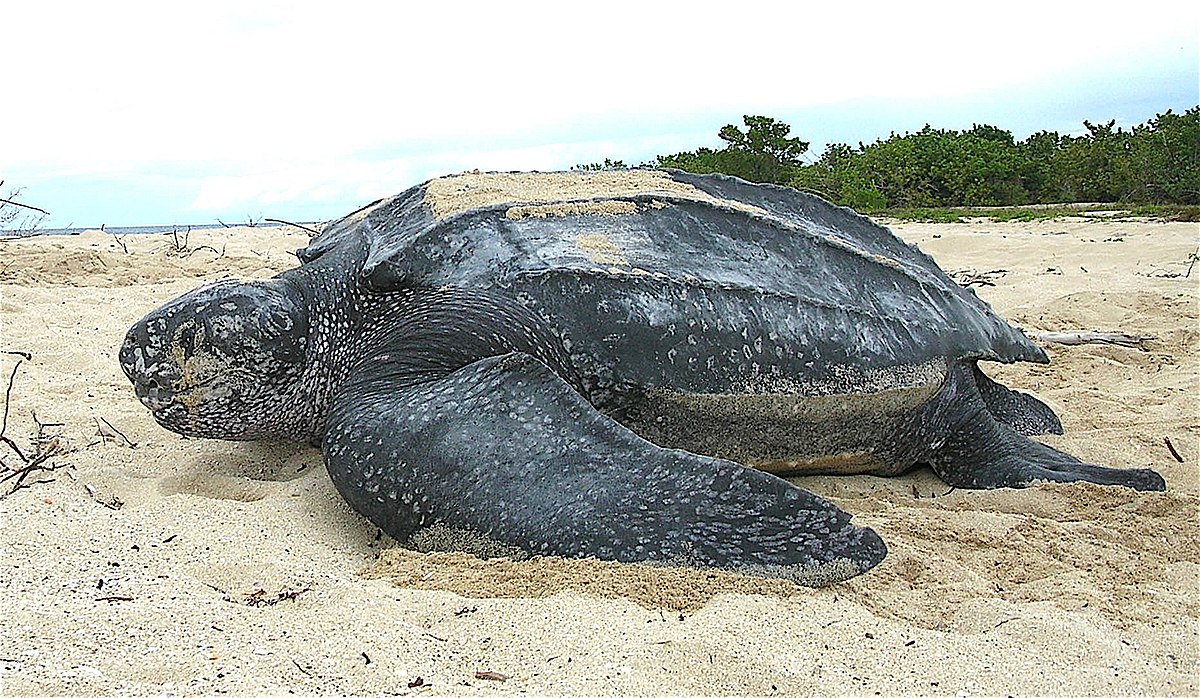The largest of all living turtles is the leatherback sea turtle which is also known as Dermochelys Coriacea. After three species of crocodiles, it is the heaviest modern reptile. The length of the adult leatherback is 1.2 to 1.9 meters which is 4 to 6.2 feet. It weighs between 250 and 700 kilograms which is equal to 550- 1,540 pounds.
The Leatherback sea turtle is known for their unique leathery shell. This shell is made up of flexible connective tissue instead of hard bony plates which is found in other species of turtle. Seven longitudinal ridges that traverse the whole length of the leatherback’s back serve as another distinguishing feature of its shell.
Why Leatherback Sea Turtle Is Becoming Endangered?
In addition, leatherbacks are noteworthy for their irregular travel habits. They are known to make lengthy trans-oceanic migrations that can be thousands of km long between their breeding and feeding areas. Although they can be found in all oceans, tropical and subtropical environments are where they are most frequently found.
Sadly, due to a variety of factors—including entanglement in fishing gear, habitat loss, and poaching for their meat, eggs, and shells—leatherbacks are regarded as being in critically endangered status. To assist in preserving these amazing animals and their habitats, conservation activities are in progress.
Distribution Of Leatherback Sea Turtle
The leatherback turtle has a diverse distribution across the entire world. D. coriacea is the most widely distributed species of sea turtle that is still in existence, with ranges that extend as far north as Alaska and Norway and as far south as Cape Agulhas in Africa and the southernmost point of New Zealand. All tropical and subtropical oceans are home to the leatherback, and they can be found there all the way up to the Arctic Circle.
The Atlantic, eastern Pacific, and Western Pacific oceans are home to the three main, genetically diverse populations. Although nesting beaches have been found in the area, nothing is known about leatherback populations in the Indian Ocean.
Habitat Of Leatherback Sea Turtle
In the open ocean, the leatherback sea turtles are found. Over the course of 647 days, researchers followed a leatherback turtle as it traveled 20,000 kilometers (12,000 miles) from Jen Womom beach in Tambrauw Regency in West Papua, Indonesia, to the United States in search of food. Because leatherback turtles pursue their prey jellyfish throughout the day, they “prefer” shallower water at night (when the jellyfish ascend the water column) and deeper water during the day. Turtles are frequently found in extremely cold waters due to their hunting method. In seas that were as cold as 0.4 °C (32.7 °F), one individual was discovered to be actively hunting.

